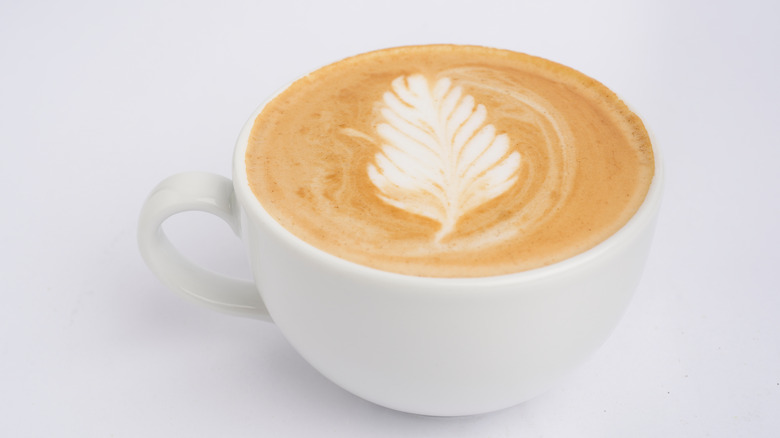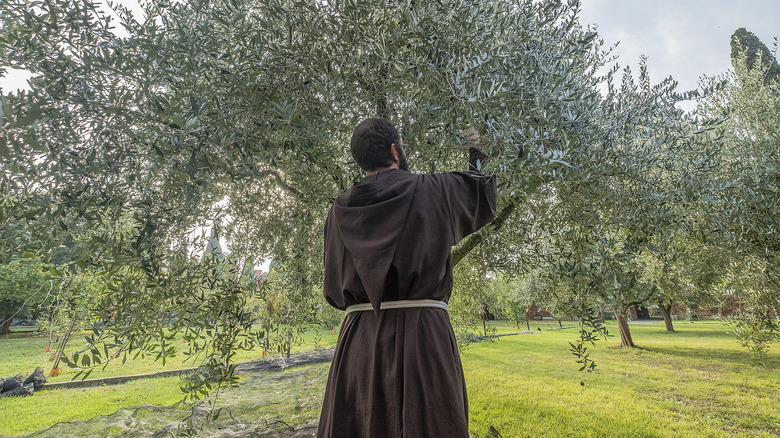The Truth About How The Cappuccino Got Its Name
Coffee has been an important part of the world's culture since the first cup was brewed in the 1200s (via PBS), and few coffee drinks are as well-loved as the cappuccino. Despite the existence of a spiced, whipped cream-topped Viennese drink called "Kapuziner" from the 1700s, the cappuccino was truly born in Italy after the invention of the espresso machine in 1901, according to Cafe 1820 (though the earliest record of the drink as written dates to 1930). While a version of this warm bean elixir paired with milk or cream was common at the time, cappuccinos, as we now know them, didn't truly take off until after World War II, when espresso machines were refined and foamed milk was introduced.
Not to be mistaken with lattes (which go heavier on the steamed milk), a cappuccino is created from hot milk, foam, and espresso. An easily customizable drink, many people add their own embellishments like frothing coffee creamer instead of milk or squirting in flavorings such as caramel or vanilla to their cup (per Roasty Coffee). Cappuccinos are massively popular now, but where did the name for this classic coffee drink originally come from?
The cappuccino was named after friars
The Capuchin friars – also called the "Cappuccini," from "cappuccio," Italian for "hood" — are a holy group dedicated to practicing a humble approach to daily life (via BBC). As Merriam-Webster notes, members of the order were admired as much for their good deeds as for their sartorial prowess. It is believed that the rich color of these men's robes, a brown that looks similar to coffee mixed with milk, was the inspiration for the cappuccino's name.
Aside from their shared moniker, this group of friars and the delicious coffee drink that honors them may seem like they have little in common. However, both have become recognized across the globe. The Capuchin are still around today and have extended their practice out of Italy into other countries (per Capuchin Franciscan ). The drink named for them has also gone worldwide. In the U.S. alone, espresso-based beverage consumption increased by 50% between 2015 and 2020, according to the National Coffee Association. Clearly, the cappuccino isn't going away anytime soon.

